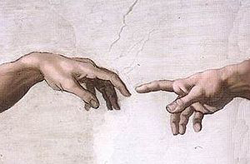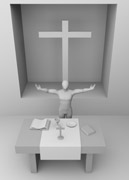 |
Story is to be read as story: a narrative that seeks to tell us something. Ancient storytellers didn’t share our modern preference for the historical event: Truth remains true whether it occurred in time or not. It’s a mark of our mortal self-absorption that we’re partial to what happens in history and reluctant to contemplate what belongs to eternity. The Genesis writers were collectors and arrangers of stories already being told in the oral tradition of Israel. They didn’t erase the seams of their sources but allowed them to stand side by side to enhance understanding through the appreciation of truth’s complexity. We see traces of these collections in the discrepancies, repetitions, and variant points of view. Here are a few of the truths these storytellers hoped to assert and preserve:
1. God is the ultimate source of everything, and therefore God alone is to be worshipped.
2. The sad history of humanity is that we steadily refuse to worship God alone.
3. God’s word is an event: When God speaks, things happen.
4. Humanity is also given the task of naming reality and sharing in dominion over reality.
5. God creates the world by establishing order out of confusion—literally cosmos from chaos in the Greek rendering. God calls this original order “good” and “right.”
6. Sin contradicts the divine will. It’s the choice we make for chaos that is neither good nor right.
7. Our freedom to choose makes us “like parent, like child.” It’s the basis of our relationship with God and lifts us above all other creatures.
8. Our choice against God’s will leads to the alienation from God that is the burden of sin. We carry this burden through history until God fully restores our relationship.
It would be pretty hard to get more truth from a story than that!
Online
• "God's Beloved Creation" by Elizabeth Johnson (America 184 no. 13:8-12)
• “Peace with God the Creator, Peace with All of Creation,” message of Pope John Paul II for the World Day of Peace, 1990,
Books
• Collegeville Bible Commentary Old Testament Volume 2: Genesis by Pauline A. Viviano (Liturgical Press, 1985)
• Genesis: A Commentary for Students, Teachers, and Preachers by John J. Scullion (Liturgical Press, 1992)
• And God Said What? An Introduction to Biblical Literary Forms by Margaret Nutting Ralph (Paulist Press, 2003)





